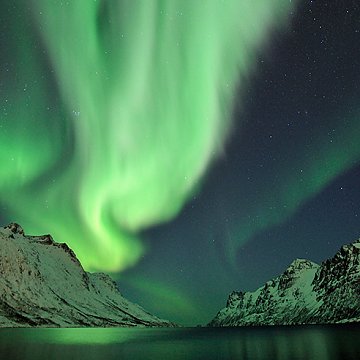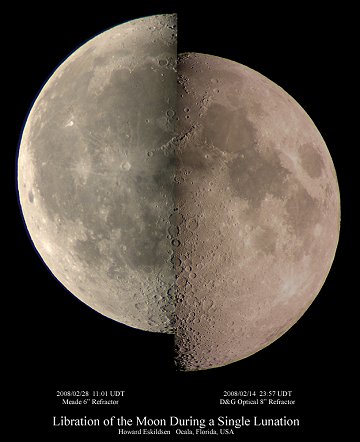| Where's Saturn? Is that a UFO--or the ISS? What's the name of that star? Get the answers from mySKY--a fun new astronomy helper from Meade. | |  | SOLAR FILAMENT: There are no sunspots today, but that doesn't mean the sun is blank. On the contrary, says amateur astronomer Paulo Casquinha of Palmela, Portugal, "looking through my Personal Solar Telescope, I see a very active star." He sends this picture of a dark filament nearly 200,000 miles long. Filaments are clouds of solar hydrogen held aloft by magnetic force fields; there are many of them floating above the sun's surface this weekend. If you have a solar telescope, take a look! more images: from P. Presby, J. Fairfull and J Stetson of South Portland, Maine; from Greg Piepol of Rockville, Maryland; NORTHERN OUTBURST: Last night (March 1st) in Ersfjord, Norway, Bjorn Jorgensen observed "an outburst of auroras so powerful, it turned the ground green. The display lasted only a few minutes," but that was enough for an unforgettable snapshot: 
Sudden outbursts like this are a mystery of space science. Oh, researchers know what causes auroras: Charged particles from space rain down on Earth's upper atmosphere causing the air to glow where they hit. But (here is the mystery) last night there was no sharp gust of solar wind to account for an outburst of the sort pictured above. Where did it come from? Answering this question is the mission of THEMIS, a fleet of five spacecraft launched a year ago by NASA to investigate the origin of auroral "substorms." March 1st should have provided some good data. March 2nd and 3rd might do the same. A solar wind stream is pressing against Earth's magnetic field and NOAA forecasters estimate a 35% chance of geomagnetic storms. Sky watchers in Alaska, Canada and Scandinavia should remain alert for auroras. March 2008 Aurora Gallery
[Interactive World Map of Aurora Sightings]
[Aurora Alerts] [Night-sky Cameras] LUNAR LIBRATION: A few days ago, NASA released new high-resolution radar maps of the Moon's south pole, revealing a fantastic land with peaks as high as Mt McKinley and craters four times deeper than the Grand Canyon. But wait. How did NASA radars located in California see the south pole of the Moon? The answer is lunar libration. As the Moon goes around its orbit, it seems to nod back and forth, tipping its north pole toward Earth one week and its south pole toward Earth two weeks later. The effect is illustrated in this composite photo of February's quarter moons: 
"Two photos taken at first quarter and 3rd quarter were combined to demonstrate the libration of the Moon," says photographer Howard Eskildsen of Ocala, Florida. "The Ptolemaeus group (three distinctive craters near center of photo) were used as the anchor point." Libration happens because the Moon's orbit is slightly elliptical (5%) and slightly tilted (5°). The two effects combine to provide a constantly changing point of view as the Moon goes around Earth. It is often said that the same side (i.e., the same 50%) of the Moon always faces our planet, but libration allows us to observe not just 50% but rather 59% of the Moon's surface.
Lunar Eclipse Photo Gallery
[Interactive World Map of Eclipse Photos]
| 
